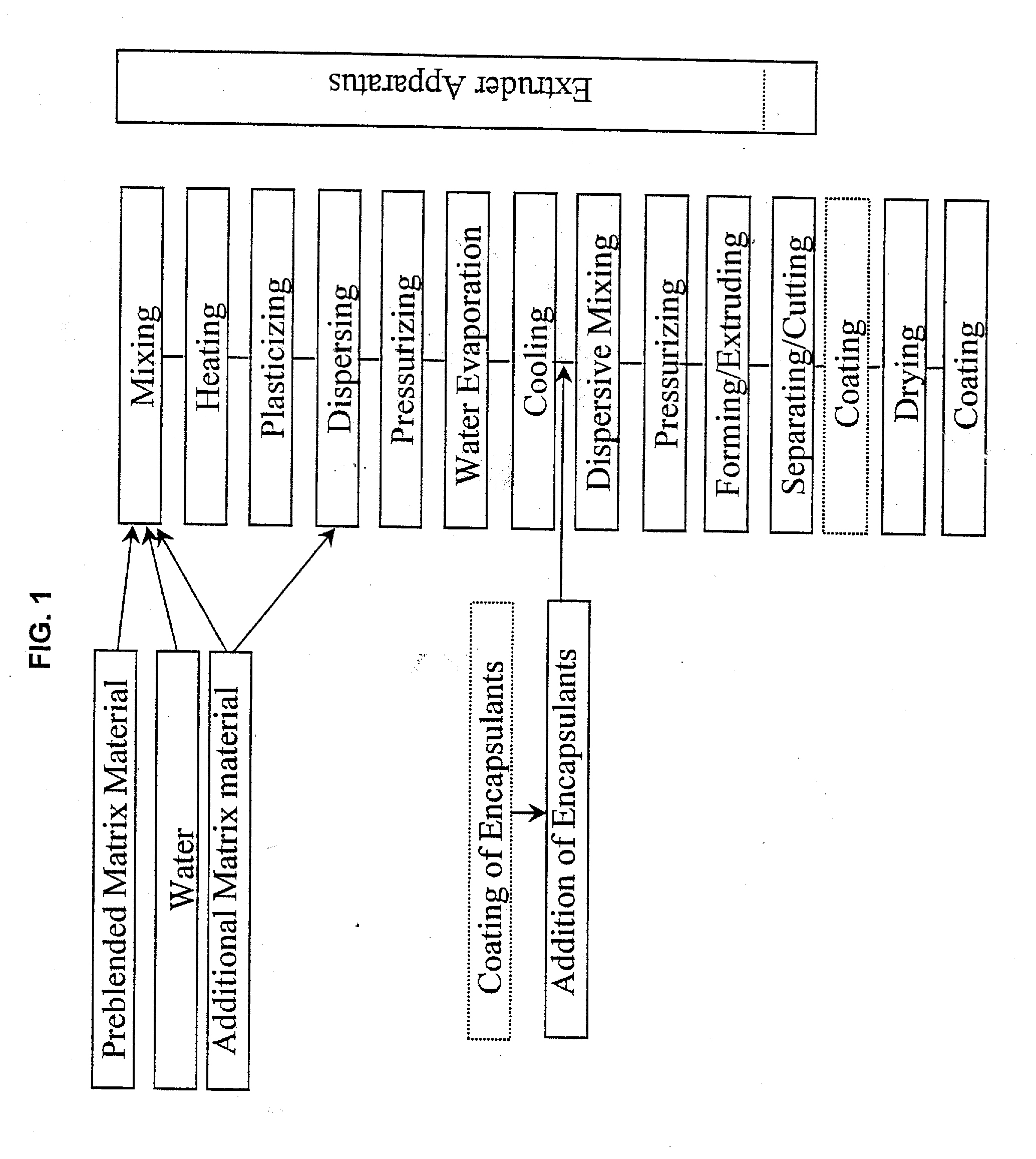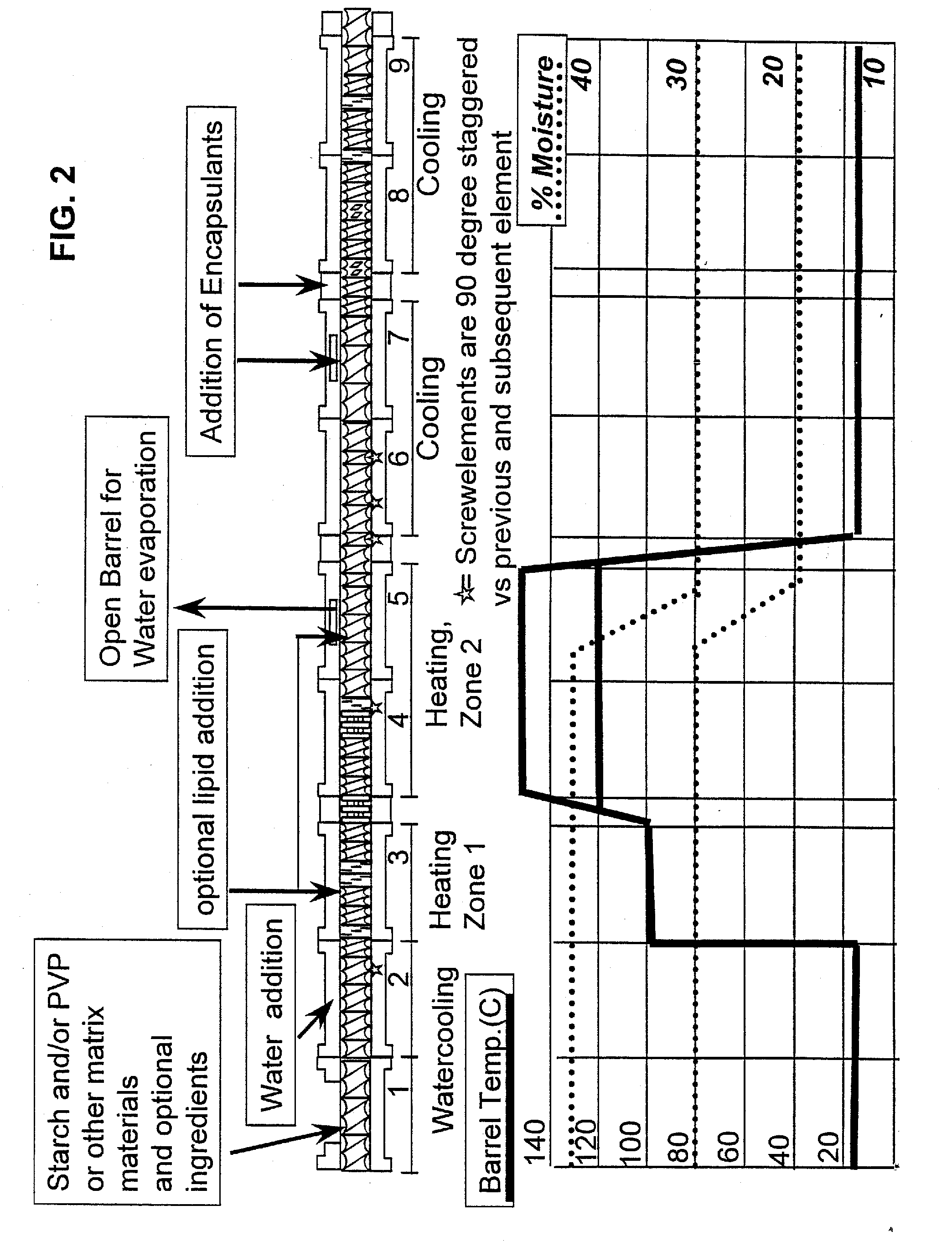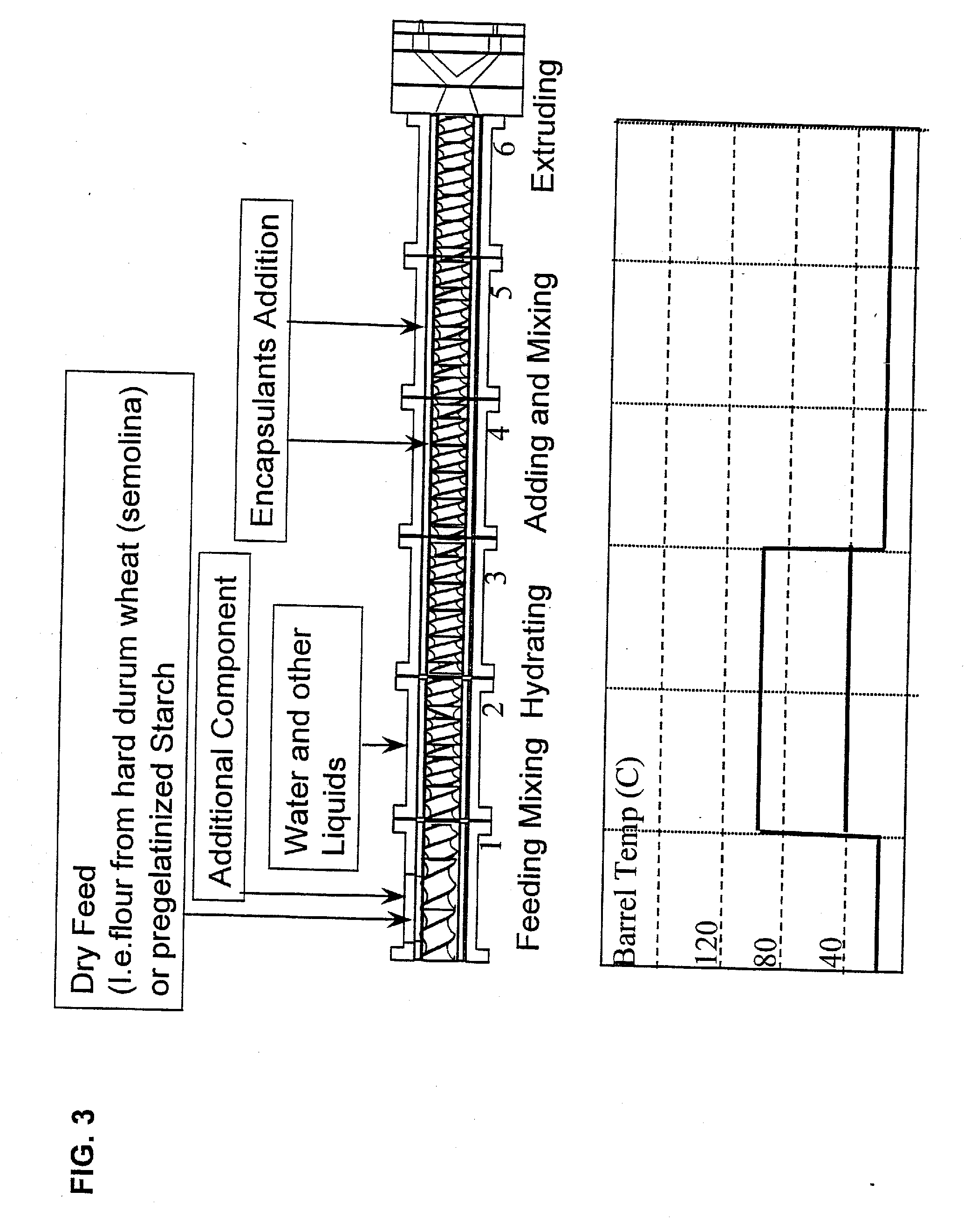Method for the embedding and encapsulation of components
a technology for components and encapsulation, applied in the field of components embedding and encapsulation, can solve the problems of adversely affecting the content of encapsulants, and achieve the effects of reducing viscosity, facilitating substantial gelatinization of starch, and avoiding substantial destruction or volatilization of active components
- Summary
- Abstract
- Description
- Claims
- Application Information
AI Technical Summary
Benefits of technology
Problems solved by technology
Method used
Image
Examples
example 1
Encapsulation of a Water Soluble, Sensitive Pharmaceutical Component
[0082]Acetylcysteine may be encapsulated by feeding a prepared blend of 96.3% corn starch, 3% low density polyethylene (LDPE) and 0.7% glycerin-mono-stearate (GMS) at a rate of 4.0 kg / h into a first feed barrel of a co-rotating twin screw extruder. In addition to the corn starch / GMS / LDPE mix, vegetable oil was fed into barrel #1 via a piston pump at a rate of 0.17 kg / h. Water was added to the mix at a rate of 1.1 kg / h via a piston pump through a liquid injection port of barrel #2. The extruder used was a Werner and Pfleiderer ZSK 25 with a screw diameter of 25 mm. The screw configuration and barrel temperature profile used was as described in FIG. 2. The extruder used had nine barrel sections. Each barrel section was equipped with bores to either heat or cool the individual barrels. Barrels 1 and 2 were cooled with tap water, barrel 3 was heated at 100° C. and barrels 4 and 5 were heated at 120° C. using heat stable...
example 3
Encapsulation of a Heat Sensitive Fat Soluble Component
[0093]In this example, a heat-sensitive fat soluble component was encapsulated. The extruder used was the same as used in Example 1 and the screw rpm was 150. A blend of 96.7% by weight starch, 3% by weight LDPE and 0.3% by weight GMS was fed at 4.0 kg / hr into barrel #1. Vegetable oil was fed at a rate of 0.16 kg / h into barrel #1. Following barrel temperature profile was used: Barrel 1 (15° C.), Barrel 2 (15° C.), Barrel 3 (120° C.), Barrel 4 (140° C.), Barrel 5 (140° C.), Barrel 6 (15° C.), Barrel 7 (15° C.), Barrel 8 (15° C.), Barrel 9 (15° C.). The encapsulant salicylic acid may be fed at a rate of 1.15 kg / h into barrel 7 at a temperature of 20° C. The encapsulant was mixed into the matrix and extruded into ropes that were cut at the die into distinct spherical pellets having a diameter of about 1 mm. After extrusion, the extruded pellets were dried at 30° C. for about 12 hours to a final moisture content of approximately 8% ...
example 9
Encapsulation of Heat Sensitive Substances into Various Matrices
[0097]Heat sensitive encapsulants or components may be encapsulated into various matrices using the extruder, screw configuration, barrel configuration, screw speed (150 rpm), and die configuration of Example 1. The barrel temperature profile which may be used is: Barrel 1 (15° C.), Barrel 2 (15° C.), Barrel 3 (120° C.), Barrel 4 (140° C.), Barrel 5 (140° C.), Barrel 6 (35° C.), Barrel 7 (35° C.), Barrel 8 (35° C.), Barrel 9 (35° C.). In another embodiment, the barrel temperature in barrels 4 and 5 may be 150° C.
[0098]The ingredients and their concentrations which may be used in matrices to vary the release rate of the encapsulant are presented in Table 2:
TABLE 2Matrix Components and ConcentrationsfromtotoMatrix ComponentlowmidmaxFunctionCarbohydratesPlant Starch14099base matrix materialCyclodextrin01060affects molecularencapsulationHydrophobic starch02040affects hydrophobicity ofmatrixProtein sourcesWheat Gluten01050af...
PUM
| Property | Measurement | Unit |
|---|---|---|
| diameter | aaaaa | aaaaa |
| specific density | aaaaa | aaaaa |
| diameter | aaaaa | aaaaa |
Abstract
Description
Claims
Application Information
 Login to View More
Login to View More - R&D
- Intellectual Property
- Life Sciences
- Materials
- Tech Scout
- Unparalleled Data Quality
- Higher Quality Content
- 60% Fewer Hallucinations
Browse by: Latest US Patents, China's latest patents, Technical Efficacy Thesaurus, Application Domain, Technology Topic, Popular Technical Reports.
© 2025 PatSnap. All rights reserved.Legal|Privacy policy|Modern Slavery Act Transparency Statement|Sitemap|About US| Contact US: help@patsnap.com



